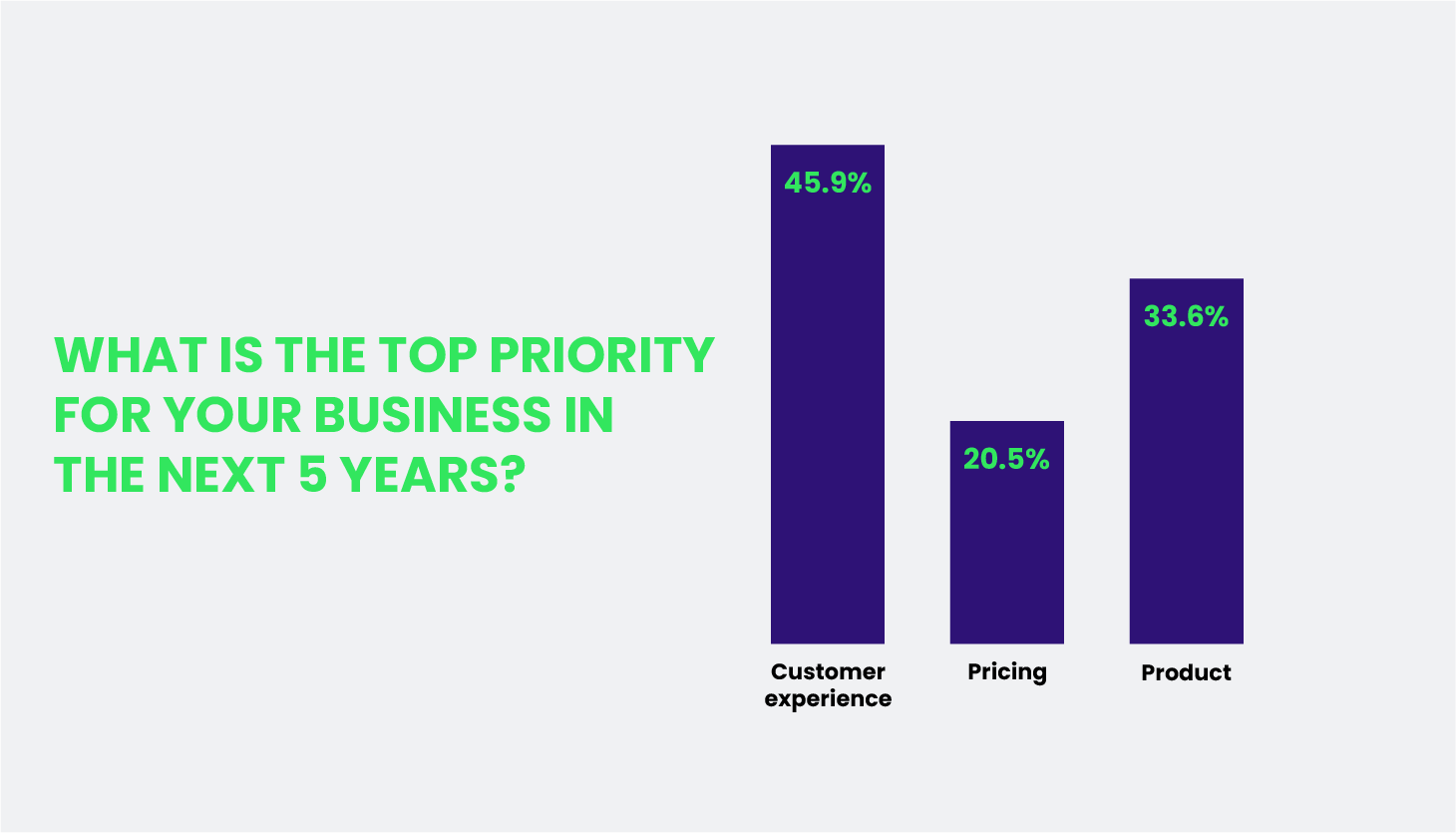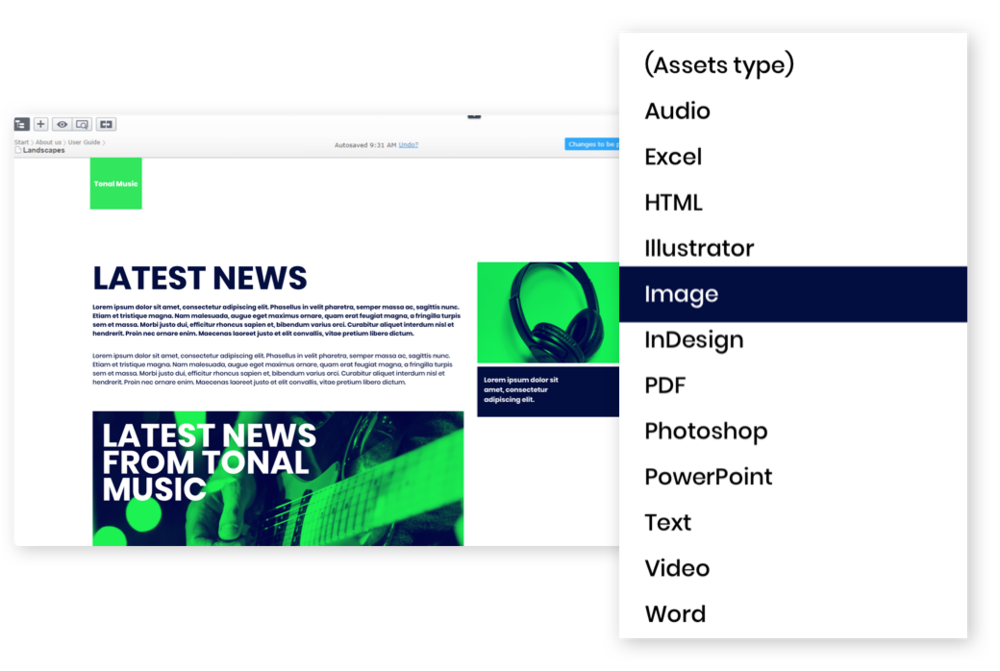Customer shopping habits have changed.
The soar in consumerism has been affected by modern technology and changes in lifestyle.
Today’s buyers no longer simply walk into a store to purchase a product they need without any prior contact from a single source. Modern customers make informed buying decisions based on a range of touchpoints.
From using a smartphone app to search for a product to buying online and picking up in-store, omnichannel customers use a range of touchpoints.
As modern brands have thousands of digital assets to manage, seeking a solution that supports multiple touchpoints that integrate seamlessly should be front and center of your business. Since omnichannel e-commerce puts the customer at the center of a marketing strategy, brands can build great relationships and increase revenue.
Technology, like digital asset management (DAM) software, supports an omnichannel marketing strategy—leverage DAM technology to optimize your omnichannel efforts.
This article will show you how.
What is the difference between omnichannel and multi-channel e-commerce?
Omnichannel e-commerce connects all of a company’s touchpoints, such as website, email, social media, and mobile. It offers customers or potential customers access to products and services across various channels, devices, and platforms.
Offering an omnichannel experience’ means there are not only multiple channels, but the channels are connected, allowing e-commerce businesses to move between them seamlessly.
As omnichannel e-commerce channels, devices, and platforms don’t operate in silos, they all work together–improving order rates by offering a seamless experience.
Source: omnisend.com
Let’s put that into practice and say you’re a retail company.
You notice a spike in the number of abandoned cart messages. With omnichannel e-commerce, businesses can increase order rates and retarget potential customers by offering discounts.
On the other hand, multi-channel e-commerce still uses more than one marketing channel. However, each channel operates independently–with limited integration or synchronization between them. Customers buy in-store and have their purchases shipped.
-
Considering customer communications and data are separated across different platforms, it often leads to marketing challenges
-
Fragmented customer experience across different channels
-
Inconsistent branding and messaging
-
Content management complexities and inefficiencies
-
Improper use of campaign data and meaningful insights
-
Despite the challenges of omnichannel e-commerce, the benefits seriously outweigh the extra effort. MCR Safety is a leading manufacturer of personal protection equipment in the US.
MCR Safety had digital assets scattered around the organization on various storage drives. Their digital marketing efforts, internal production of digital assets, email marketing, and field sales activities weren’t aligned.
The brand created smooth omnichannel experiences for customers at all points of the buying journey. Every department in the company now pulls digital assets and product information from the platform.
“That’s why we knew that whenever we implemented some kind of asset management system, it had to be a Tier 1 application because it was going to touch every aspect of the business from marketing to sales to distribution.”
– Bret Lipscomb, Manager of Digital Solutions at MCR Safety
Limited budget? No problem. There are simple, cost-effective ways to boost your omnichannel e-commerce marketing efforts.
Consistency is vital when it comes to omnichannel e-commerce. Repeat the same taglines and messaging across all channels to reinforce your brand message and improve brand recognition.
Create quality content that resonates with your target audience. Improve engagement and drive traffic to your website with social media content, blog posts, and email newsletters.
Considering social media is a powerful tool for small businesses to connect with their customers, distributing engaging content and interacting with new and existing customers can build a loyal following and improve brand awareness.
4 Ways DAM software supports omnichannel e-commerce
Despite recognizing the importance of omnichannel e-commerce, brands need help creating seamless customer experiences. And the more digital assets you have, the more complex it becomes.
Omnipresent technology like DAM can support your e-commerce marketing strategy. It allows you to connect the dots by integrating data from different marketing channels–allowing you to make better decisions about the most effective marketing, reduce duplication and automate routine tasks.
Considering DAM platforms offer a vast range of features to support omnichannel e-commerce, investing in an efficient and productive tool to manage your marketing efforts is no longer a nice to have. It’s a must-have.
Get to know your customers better
Understanding customer behavior across various platforms is integral to any omnichannel marketing strategy.
Why?
Because by analyzing customers’ preferences, motivations, and decision-making processes, businesses tailor their marketing, product development, and overall business strategy to better meet customer needs and expectations.
That said, understanding customer behavior is one of the top five marketing challenges. According to McKinsey, almost half of omnichannel consumers will shop elsewhere when delivery times are too long.
Improving the customer experience is a priority for most businesses. Companies can reach a wider audience and capture new market opportunities by expanding to multiple channels.
A lack of sufficient data about current trends and customer buying patterns means brands struggle to gather insights–often limiting the understanding of customer behavior.
Considering different e-commerce customers have different preferences when it comes to making a purchase, businesses can cater to diverse customer segments by being present across various channels. It’s why companies that focus on customer experience see an 80% increase in revenue.
DAM technology is a powerful solution that can help you get to know your customers better. Maintain awareness of current trends and leverage content analytics to unlock insights.
-
With Digizuite’s DAM software, you can:
-
Look at multiple assets simultaneously
-
Group similar assets into collections and pull out data
-
Anticipate new trends in customer buying patterns
-
Identify which distribution channels and digital assets are most effective at engaging new customers
-
Understand which channels take the most effort with little reward
-
Leverage the strengths of both online and physical channels to meet customer expectations and embrace versatility. Be open to different approaches and strategies.
Get data-driven insights for optimizing content strategies and customer experience. Set realistic KPIs to determine which digital channels and assets are most effective for your business.
Centralized content management
Picture this:
Your social media team distributes an infographic to showcase the newest feature of a product.
Your marketing team receives five new customers for your monthly newsletter the same day. Your marketing team wants to use the same infographic in the next edition but can’t find the image.
Time is money. Locating what you need fast should be the norm, not the exception.
Spending copious amounts of time finding the latest version of an image or other digital asset is frustrating and can result in unnecessary delays.
Having centralized content management, different teams manage, access, and control digital content from a central location, regardless of where they are based–improving productivity and enhancing the overall user experience.
By consolidating and organizing various types of content, such as graphics, documents, videos, and other media, in a unified and easily accessible manner, everyone can find what they need with minimal effort.
Integrate with an existing tech stack
Data synchronization is critical to maintaining accurate and up-to-date information across omnichannel e-commerce.
That said, synchronization issues can occur, leading to data inconsistencies, duplication, or data loss. According to IBM, the average data breach cost in the United States is $9.44 million.
Integration with Hootsuite, for example, allows you to handle all aspects of social media management securely–from planning and creating your next campaign to capturing insights to improving your omnichannel presence.
Let’s put that into practice and say your editor needs an approved photo to add to a brochure.
Rather than hopping from platform to platform to find the image, team members can search and import the digital assets they need directly from the Digizuite platform and embed them in an app of choice.
Secondly, scale across many websites simultaneously and get to market fast–all from an integrated user interface. Integrating omnichannel e-commerce with customer service and support platforms, like Sitecore, optimizes marketing strategies and improves overall business performance.
Customer service agents can access data like customer profiles and order histories to provide personalized and efficient support.
Expand your omnichannel presence. Create a unified ecosystem that offers seamless data flow, streamlined operations, and enhanced customer experiences across all touchpoints.
Activate personalization
Dear Sir, to whom it may concern. Dear Madam. Good afternoon. Hello….
These are just a few generic email introductions that customers receive in their inboxes.
But what’s wrong with that?
Well, where customers are bombarded with generic marketing messages, personalization can give businesses a competitive edge.
When brands demonstrate a deep understanding of their customers by delivering personalized omnichannel experiences, they can differentiate themselves from competitors and stand out in customers’ minds–leading to increased market share and brand preference.
Make customers feel valued and understood. Address the customer by name. Provide content that aligns with their preferences and needs, improving customer satisfaction and loyalty.
Personalization can help cut through the noise and help you stand out in a crowded marketplace. Tailoring communications increases customer engagement and conversion rates.
When customers receive messages that resonate personally, they are more likely to pay attention, interact, and take desired actions, such as purchasing or signing up for a service.
-
Drive effective engagement across multiple channels and build stronger connections with customers by:
-
Unifying customer data. A central repository, like DAM, can consolidate data from all your channels and touchpoints, such as online platforms, mobile apps, and physical stores. Get a comprehensive view of each customer’s preferences, behaviors, purchase history, and interactions.
-
Personalizing the buyer experience. Get up-to-date demographic data in return for offering personalized communications, offers, and recommendations, like upgraded products or services that align with the customer’s preferences. In fact, four out of five consumers would share personal data for a better experience, for example, email address, age, and gender.
-
Using metadata and tagging features. Metadata can include essential information about the target audience and usage rights, such as filename, date created, and channel for use. Businesses can easily search and filter assets by leveraging metadata and tagging features to create personalized omnichannel content that resonates with specific buyer segments.
-
DAM supports omnichannel e-commerce delivery. Deliver personalized content consistently across various touchpoints, including social media, brick-and-mortar stores, websites, and email campaigns.
Conclusion
Omnichannel e-commerce should be customer-centric and focused on consistent customer experience across all touchpoints.
DAM software can optimize omnichannel strategies and give you a competitive edge. Reduce team friction and duplication of simple marketing tasks with a centralized content management system that integrates with existing technology.
Interested in learning more about how Digizuite can enhance your omnipresence?
Book a demo with us.









